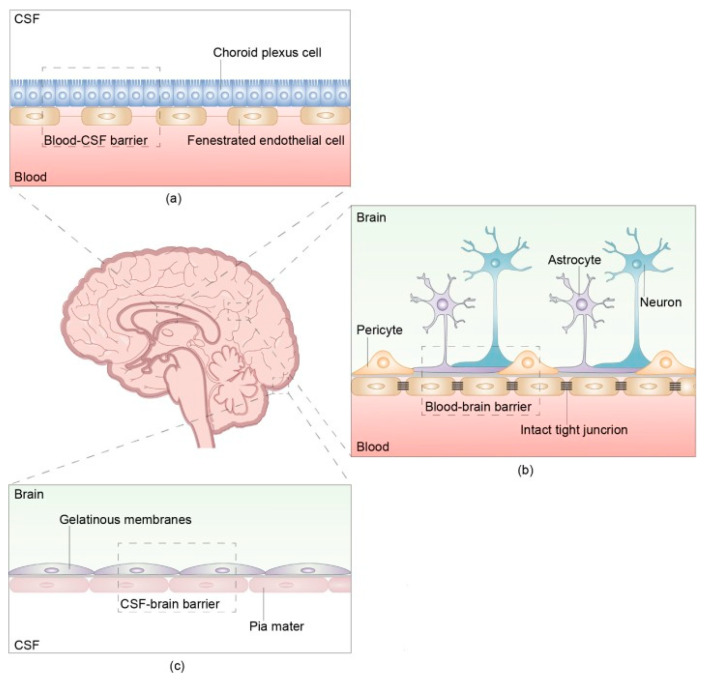Figure 1.
The structure and composition of the brain barrier The brain barrier consists of three parts: the blood- cerebrospinal fluid (CSF) barrier, blood–brain barrier, and CSF-brain barrier. (a) The blood-CSF barrier is located between the blood and CSF in the ventricular choroid plexus. (b) The blood–brain barrier (BBB) is located between microvascular endothelial cells and the nerve cells of the brain and spinal cord. There are intact tight junctions between capillary endothelial cells that prevent the passage of macromolecules other than water and certain ions. The intact and continuous capillary basement membrane is surrounded by a glial membrane of protruding astrocytes. The BBB, main barrier that protects the CNS, prevents many macromolecules from entering the brain and selectively pumps harmful substances out of the brain. (c) The CSF-brain barrier is located between the CSF in the ventricles and subarachnoid space and the nerve cells of the brain and spinal cord. Reproduced with Permission from Wang, Y., Yang, X., Li, N.J., Xue, J.X. Leptomeningeal metastases in non-small cell lung cancer: Diagnosis and treatment. Lung Cancer. 2022;174:1–13. doi:10.1016/j.lungcan.2022.09.013 [15].

